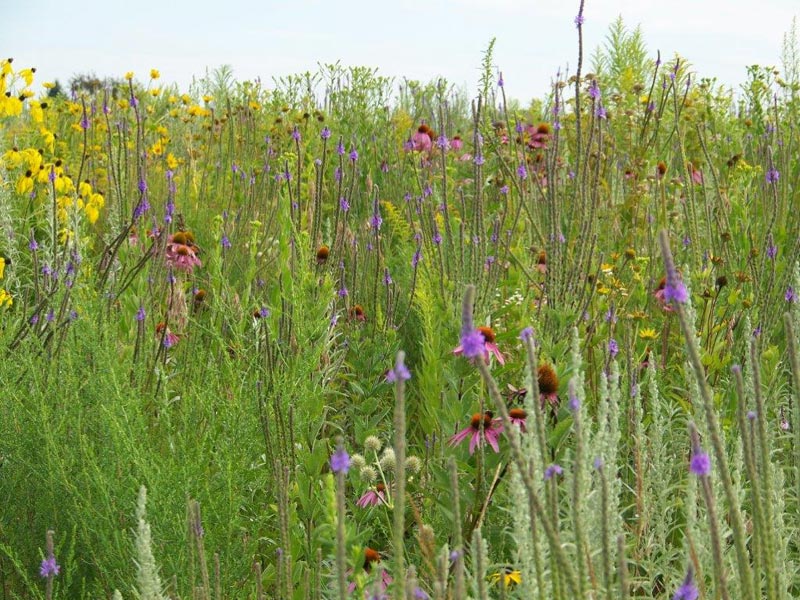
Each site is unique and there is not a single seeding method that is appropriate for every project. It may be possible to plant an entire project using one method, or varying conditions may require planting using a combination of methods.
NATIVE NO-TILL DRILL
No-till drills are typically used to seed larger areas, sites with existing vegetation, or areas with hard ground. They plant seed in rows by opening a shallow groove in the soil, which causes only minimal soil disturbance. Seeds should be planted at a depth between 1/8 and 1/4 inch below the soil surface, and some seeds should be visible on the surface after planting. Many no-till drills have separate seed boxes for small seed, fluffy seed, and cover crop, and when calibrated correctly can plant them all very accurately.
BROADCAST SEEDER
A broadcast seeder is an ideal choice for larger sites that have recently been tilled. After being broadcast, seed should be packed with a roller to ensure that good seed to soil contact has been made.
HAND BROADCASTING
Hand broadcasting is commonly used for small projects or in areas that are too wet or steep to use a mechanical seeder. Because such a small amount of native seed is needed per acre, planting by hand can be very challenging. Consider bulking up the mix with either an inert material like sawdust or vermiculite or a cover crop of Oats or Winter Wheat. It is also a good idea to divide both the planting area and the seed into smaller increments to ensure that the seed is evenly distributed throughout the entire site. Lightly raking, rolling, or dragging the site after broadcasting ensures that good seed to soil contact has been made.
WETLAND AREAS
When seeding in wetland areas or along the edge of a body of water, the soil is often too wet to work with; however, if the soil is bare and above the water level, it is possible to broadcast wetland seed. The site should be lightly raked and covered with straw or erosion control blanket after broadcasting if possible. Wetland plants that establish at the water’s edge will naturally fill in as the water level changes over time. Wetland seed is very easily smothered by sedimentation. The bottoms of basins that are likely to be flooded and silted in before plants become established should not be seeded. In areas where the water level fluctuates, it is better to establish wetland plants at the edges and allow them to spread into deeper water or dry pond bottoms on their own.
COVER CROP
An annual cover crop is sometimes planted along with native species in an effort to suppress weed growth and reduce soil erosion. Oats are commonly used in the spring and Winter Wheat is used in the fall. Both should be applied at a rate of 50 – 100 pounds per acre.
MULCHING
Mulch can be used to help prevent erosion and to hold moisture in the soil for the germinating seeds. On steep sites, a straw-based erosion control blanket can also be used. On flatter sites, clean, weed-free straw can be used at a rate of two tons per acre. It should be crimped in place with a disc anchor.


